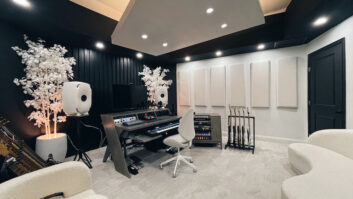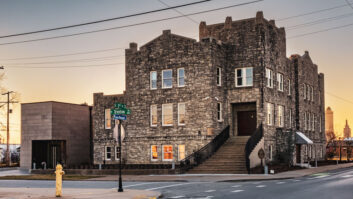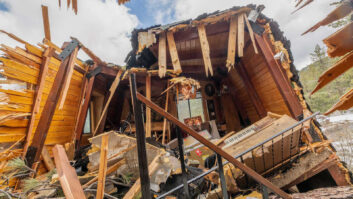Back in 1989 when I walked into John Mellencamp’s Belmont Mall Studios off Highway 46 east of Bloomington, Ind., I had no idea that I was looking into the future. It was my first visit to a “real” studio, and I had no background to make the distinction between a private and commercial facility. There was a Trident 80 console, a Studer 24-track, JBL mains with Yamaha NS-10s on the bridge, and a big live room with a tall ceiling and perforated radio-station pegboard on the walls to break up drummer Kenny Aronoff’s monster beating. It was a studio. A great one. Simple as that.
Mellencamp has made a series of phenomenal records there since the mid-1980s, and bandmates/producers Toby Myers and Mike Wanchic have made use of it over the years to record local bands and pet projects. To a first-year editor, born and raised a few hours to the north, this was the big-time! I had yet to visit Record Plant, Electric Lady, the Village, Paisley Park, Criteria, the late-great Hit Factory or any of the other legendary facilities that defined “recording” over the previous couple of decades. And I still had much to learn about music, budgets, lease payments, vintage gear, the emergence of digital recording and the shifts on the business side of the industry. At this point I was just listening to music, great music, in a fantastic-sounding space. I was in heaven, and I was hooked.
Then, after returning from the trip, fellow editor Linda Jacobsen and I became involved in a news story out of Los Angeles involving producer Chas Sandford and an ad hoc coalition of studio owners known as the Hollywood Association of Recording Professionals. Sandford had put an SSL in his Hollywood home and built out a professional space to record, mix and produce in a residential area. He was a name, and he was targeted by commercial studio owners, hoping to head off the coming boom in home-based recording by raising the specter of zoning laws and municipal ordinances. It got ugly at times, but the ship had sailed.
It used to be easy. Recording studios were either “big,” which translated to commercial, or “small,” which typically meant private. There were all kinds of variations within each, based on the track count of the recorder, number of rooms and size of the live space, but basically “big” studios were considered serious and “small” studios were for artists at home.
Of course, then the “project studio” emerged, the “private studio” became more common, and a few major studios in major markets disappeared. The middle class suffered, as it did in a lot of industries, and reports began circulating about the demise of the industry.
But it was hardly a death knell. Studios are still being built and music and sounds are still being produced, in greater volume than ever before. It’s simply a different industry, one that involves laptops and file exchange and multi-location production. The lower barrier of entry for an artist/producer/engineer has changed the game, but a studio is still a studio, and a quality recording is still a quality recording.
I’m reminded of these trends each year when we do our annual “Class Of …” issue, highlighting acoustic design. Looking through our cover story, in 2015, you will see major facilities going up all around the world, along with private facilities outside the traditional recording centers. These are superb spaces, whether commercial or private, and they reflect the way audio is being created today.
Making a great recording of a great song is what this industry is all about. I realized that first back at Belmont Mall, some 26 years ago, and I’m reminded of it every time I hear a great song in a great space.
Tom Kenny, Editor, Mix






